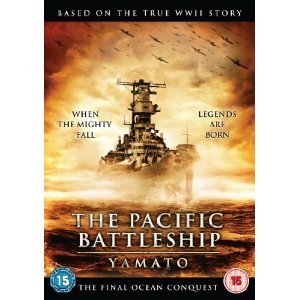Jonathan Clements's Blog, page 20
April 17, 2011
Osamu Dezaki 1943-2011
 I've written an obituary of Osamu Dezaki, director of Golgo 13, Aim for the Ace and Black Jack, among many others. It's up online at the Manga UK blog. Not something I was expecting to have to write this morning, but when is it ever?
I've written an obituary of Osamu Dezaki, director of Golgo 13, Aim for the Ace and Black Jack, among many others. It's up online at the Manga UK blog. Not something I was expecting to have to write this morning, but when is it ever?
Dezaki was one of the few animators working in the Japanese business who had a readily identifiable style. You could always tell you were watching a Dezaki anime, regardless of the subject, thanks to his "Postcard Memory" cutaways.
I always enjoyed his insistence on taking things seriously — even comedy. This attitude even cost him work, such as the time he refused to direct a school drama about boys falling in love with other boys, because the gayness wasn't real enough, and the realness wasn't gay enough.
April 14, 2011
Ad Men
Over on the Manga UK blog today, I've written an article about the most widely seen anime of 1958. If you thought it was Legend of the White Snake, then you're in for a surprise. It's actually one of the many anime adverts, often overlooked by the anime studies community.
Although nowhere near as outright creepy as this one:
April 11, 2011
Salon Futura #8
 The latest issue of Salon Futura is online today, and includes my article on Yukinobu Hoshino, the manga artist behind 2001 Nights, the Professor Munakata series, and, much, much more. I've just written the entry on Hoshino for the forthcoming third edition of the Encyclopaedia of Science Fiction, which now includes full bibliographies for Japanese subjects, so the article is the result of several days of cataloguing and poking around Hoshino's publication record. My ongoing work on the encyclopaedia, however, amounts to an entire book-within-a-book about Japanese SF authors and winners of the Sei'un Awards, so you'll see more in a similar vein someday soon. As for 2001 Nights, UK residents can catch it at the Sci Fi London all-nighter on 30th April.
The latest issue of Salon Futura is online today, and includes my article on Yukinobu Hoshino, the manga artist behind 2001 Nights, the Professor Munakata series, and, much, much more. I've just written the entry on Hoshino for the forthcoming third edition of the Encyclopaedia of Science Fiction, which now includes full bibliographies for Japanese subjects, so the article is the result of several days of cataloguing and poking around Hoshino's publication record. My ongoing work on the encyclopaedia, however, amounts to an entire book-within-a-book about Japanese SF authors and winners of the Sei'un Awards, so you'll see more in a similar vein someday soon. As for 2001 Nights, UK residents can catch it at the Sci Fi London all-nighter on 30th April.
Meanwhile, last week I dropped in on a London studio in order to see how things were going on the English audio recording of Musashi: Dream of the Last Samurai, which will be out from Manga Entertainment in July. I turned up for an afternoon session to discover that the studio's previous occupant had left his trousers behind on the sofa. One wonders what kind of impression that must have made in Soho, if he was wandering around attired only from the waist up, like some celebrity version of Donald Duck. Luckily, of course, it was Soho, so I imagine nobody noticed.
April 6, 2011
Interesting Times

Much to everybody's surprise, my biography of Mannerheim has suddenly received a review in this week's Times Literary Supplement by Tony Lurcock, who calls it an "exemplary and generously illustrated account."
Which is nice.
April 5, 2011
Dive! Dive! Dive!
 The "location hunt" is the greatest boondoggle in the anime world. These tax-deductible research trips have sent animators all over the world to soak up local colour and amass materials to add a note of realism to their works. For Katsuhiro Otomo's Steam Boy, photographers clambered over London and Manchester, snapping Victorian-era buildings. For Laputa, Hayao Miyazaki cut a strange dash as the lone Japanese tourist in the Welsh valleys. For Macross Plus, Ichiro Itano and Shoji Kawamori duelled in the air in surplus US military jets. For Gunsmith Cats, the entire crew appears to have gone mad in Chicago at shooting ranges and strip clubs. It's a dirty job, but someone has to do it.
The "location hunt" is the greatest boondoggle in the anime world. These tax-deductible research trips have sent animators all over the world to soak up local colour and amass materials to add a note of realism to their works. For Katsuhiro Otomo's Steam Boy, photographers clambered over London and Manchester, snapping Victorian-era buildings. For Laputa, Hayao Miyazaki cut a strange dash as the lone Japanese tourist in the Welsh valleys. For Macross Plus, Ichiro Itano and Shoji Kawamori duelled in the air in surplus US military jets. For Gunsmith Cats, the entire crew appears to have gone mad in Chicago at shooting ranges and strip clubs. It's a dirty job, but someone has to do it.
The oddest location hunt known has to have been be the one experienced by Tadahito Mochinaga in 1944, when he was commissioned to make the propaganda cartoon Fuku-chan's Submarine. His brief was no weirder than that of many modern anime producers: a fun little singsong kids' film, that also promoted the Japanese Navy. Because the Navy was paying for it, he was sent off to the navy base at Kure to see a real submarine up close.
Unknown to Mochinaga, he'd been booked into the Iwata Inn, a frequent haunt of kamikaze pilots on their last night of freedom. Mochinaga presumably kept quiet about his cartoon mission, but the waitresses misinterpreted this as a sign of shyness or patriotic reticence. That night, the happily married Mochinaga found two of them snuggling under his duvet for a patriotic send-off, and had to shoo them away.
The following day, he and his production crew were taken down to the docks and aboard submarine I-157, where they were plied with whisky in the captain's cabin, and treated as officers by the trainee crew. They squeezed through the narrow hatches, and experienced the claustrophobic, stuffy longeurs of a dive.
Fuku-chan's Submarine, like many other wartime anime, mixed cartoonish antics with oddly exacting replications of life in the military. A scene in which the crew snatch up flying fish from the deck and grill them for dinner was based on Mochinaga's own observations when I-157 surfaced in the Inland Sea. The fish are incorporated into a prolonged kitchen scene, which proved to be the most popular moment of the movie, not for its peppy accompanying tune, but for the simple presence of provisions onscreen. Wartime Japan was already suffering from severe shortages – even as he made Fuku-chan's Submarine, Mochinaga lost his morning taxi because there was no longer any petrol, and several staff members were conscripted. Food was running low; grocery stores stocked nothing but tea and curry powder, and Mochinaga was subsisting on a single bowl of porridge a day. He poured his personal longing for a sumptuous banquet into the submarine kitchen scene, and his audiences devoured it hungrily.
I say that Mochinaga had the weirdest trip, although I only know about it because he wrote about it in his memoirs. But his colleague Mitsuyo Seo, who would make the legendary Momotaro's Divine Sea Warriors the following year, seemed to have an awfully good understanding of what was involved in jumping out of a plane. Did Seo actually grab some sky with Japanese paratroopers in 1945, all for the sake of his art…? Sadly, Seo never wrote an autobiography, so perhaps we'll never know.
Jonathan Clements is the author of Schoolgirl Milky Crisis: Adventures in the Anime and Manga Trade. This article first appeared in NEO #82, 2011.
April 4, 2011
Aspects of the Governing of the Finns
 Aspects of the Governing of the Finns is far more vibrant and colourful than its stuffy title suggests; it challenges the reader to actively wrestle with it in search of elusive truths. Dr George Maude, a Knight of the Order of the Lion of Finland and the author of the Historical Dictionary of Finland (2006), begins as he means to go on, provocatively suggesting that the "dominant role" of German soldiers in the 1918 liberation of Helsinki may have prevented a massacre of the city's Reds. He soon points out that Mannerheim the "youthful" Finnish general was actually a Swedish-speaker in his fifties who had loyally served the Russian Tsar for three decades, and who would soon skip town. But his words are chosen with the greatest of care; for the next 300 pages, Maude argues that Finland's political history is littered with misleadingly archetypal public personae, unlikely alliances, and discarded alternatives.
Aspects of the Governing of the Finns is far more vibrant and colourful than its stuffy title suggests; it challenges the reader to actively wrestle with it in search of elusive truths. Dr George Maude, a Knight of the Order of the Lion of Finland and the author of the Historical Dictionary of Finland (2006), begins as he means to go on, provocatively suggesting that the "dominant role" of German soldiers in the 1918 liberation of Helsinki may have prevented a massacre of the city's Reds. He soon points out that Mannerheim the "youthful" Finnish general was actually a Swedish-speaker in his fifties who had loyally served the Russian Tsar for three decades, and who would soon skip town. But his words are chosen with the greatest of care; for the next 300 pages, Maude argues that Finland's political history is littered with misleadingly archetypal public personae, unlikely alliances, and discarded alternatives.
Conservative Finns might chafe at Maude's cynicism towards the sacred cows of the 20th century; more open-minded readers will appreciate his empathy for the enemies of yesteryear and his ceaseless questioning of what conservatives think they are conserving. Maude's sources are wide-ranging, from PhD theses to newspaper archives, although some assertions rely on the less rigorous focus of recent TV documentaries. Meanwhile, he encourages a healthy mistrust of documents not only from WW2 and the Cold War, but also from the national birth trauma that he dutifully identifies with its twin titles: the Finnish Civil War/Revolution. If there is any problem with his scholarship, it is merely that he (or his publisher) has failed to codify it with an index – a regrettable omission in an academic work that will surely make it harder for other researchers to use.
Like most foreign authors on Finland (Screen, Upton, Clements…), Maude has married into his subject, in his case into a family with ties to the hotly contested city of Viipuri. Hence, his account often seems considered from the vantage point of a counterfactual Finland that might have been. This is a valuable approach to history, educating the reader in the "what-if" scenarios that had to be rejected before real history could happen. What if, as Britain once unhelpfully suggested, post-revolutionary Finland were re-incorporated into Sweden? What if, as Germany once urged, Finland embraced a notion of Finnlands lebensraum and seized the Kola Peninsula? What if, as Russia once hoped, Kuusinen's Terijoki puppet regime had taken hold, and turned the country into a Soviet republic? Maude seems determined to ignite rewarding arguments everywhere that Finns talk about Finland – except, oddly, Lapland, with issues of Saami integration or autonomy unmentioned.
Maude dares us to consider paths not taken, even into his final 50 pages, where he assesses the years since 1981 in terms of "disequilibrium economics" – Finland's dual position at the periphery of both the rising European Union and the collapsing Soviet Russia. He is particularly persuasive on the terrifying compromises and daunting realpolitik forced on Finnish governments during the Cold War, and demonstrates very well for foreign readers why figures such as Kekkonen are still revered at home. His book does not conclude so much as stop mid-flow, as if boisterous students have dragged him from his podium. In a hurried coda about the current economic crisis, he compares modern Finnish defences against Russia to those of the Afghan Taliban, ending as he began, with a mischievous reinterpretation of acknowledged facts; should the Russians ever invade Finland, they would indeed face decades of rural resistance from a fanatic populace with an already legendary reputation for defiance and sisu. It is a fittingly cheeky finale to an inspiring, exhilarating book that makes Finnish politics come alive, scattered with intriguing asides and wry observations.
Jonathan Clements is the author of Mannerheim: President, Soldier, Spy. This article comprises the original English text from a review published in Finnish in the latest edition of Ulkopolitiikka, the Finnish Journal of Foreign Affairs.
March 29, 2011
Downmarketing
It's been twenty years since Katsuhiro Otomo's Akira changed the way the UK watched Japanese cartoons. After 1991, a Japanese origin became something to be trumpeted: a selling point. But could that all be about to change again?
My usual haunts aren't there any more; old-fashioned browsing is becoming a thing of the past. Tower Records has gone. The Virgin megastores have gone. The HMV-Waterstones-Fopp conglomerate is now practically a UK monopoly, and still struggling. Fearing the worst, some video companies are losing the art of finding out what their audience wants. Or rather, they still have an audience. But it isn't me any more.
 Perhaps we have passed a tipping point. Some of the new blurbs can't be bothered to tell me about directors I might like, or actors I follow. Far better, it seems, to come up with a new, zappy title, hide the word "subtitled", and hope it shifts from the bargain shelves in Sainsbury's. Bang Rajan 2 has been retitled Blood of Warriors: Sacred Ground, because that way it doesn't sound like a Thai sequel. Pacific Battleship Yamato has sneaked out in the UK with the "Yamato" part rendered in smaller type, as if afraid of scaring people off. R-Point has just been re-released as Ghosts of War, with its Korean origins carefully shunted into the shadows. It seems that it really is more profitable to take a DVD downmarket to appeal to impulse buyers in the supermarkets.
Perhaps we have passed a tipping point. Some of the new blurbs can't be bothered to tell me about directors I might like, or actors I follow. Far better, it seems, to come up with a new, zappy title, hide the word "subtitled", and hope it shifts from the bargain shelves in Sainsbury's. Bang Rajan 2 has been retitled Blood of Warriors: Sacred Ground, because that way it doesn't sound like a Thai sequel. Pacific Battleship Yamato has sneaked out in the UK with the "Yamato" part rendered in smaller type, as if afraid of scaring people off. R-Point has just been re-released as Ghosts of War, with its Korean origins carefully shunted into the shadows. It seems that it really is more profitable to take a DVD downmarket to appeal to impulse buyers in the supermarkets.
This brutally realist approach essentially gives up on specialist audiences. Terrifyingly, it even seems to make sound business sense. The sales figures for these films compare very favourably with those for bespoke, arty editions targeted at "fans". The number of customers who will actively seek out a Kong Su-chang film, or ask for R-Point by name is greatly outweighed by the number of passing shoppers who will say: "Cool! Zombie Soldiers!" (Even if there aren't any zombies in R-Point). The nature of the sales pitch has been reframed from cognoscenti to ignoramuses: less marketing, more downmarketing.
 Japanese animation has been here before. Anime pre-Akira endured thirty years with rewritten soundtracks, altered storylines and dumbed-down titles. That was the age of the Hidden Imports, when you could see anime on TV, but only shoved unceremoniously in the kiddie cartoon slots. If companies stop caring about consumers who care, then they stop advertising in specialist magazines. If they start categorising not by directors and stars, but by nothing but broad genres ("WAR!", "GHOSTS!"), we could lose the kind of tagging data that makes it possible for Amazon to know you might like a particular movie. They could give up on DVD extras, because the new audience won't want a commentary or a making-of.
Japanese animation has been here before. Anime pre-Akira endured thirty years with rewritten soundtracks, altered storylines and dumbed-down titles. That was the age of the Hidden Imports, when you could see anime on TV, but only shoved unceremoniously in the kiddie cartoon slots. If companies stop caring about consumers who care, then they stop advertising in specialist magazines. If they start categorising not by directors and stars, but by nothing but broad genres ("WAR!", "GHOSTS!"), we could lose the kind of tagging data that makes it possible for Amazon to know you might like a particular movie. They could give up on DVD extras, because the new audience won't want a commentary or a making-of.
Look to live-action for a scary glimpse of anime's possible future. Are we on the brink of a new Dark Age? Back to the bargain bins…?
March 28, 2011
Summer Wars
March 23, 2011
Oriental Expression
[image error]
This year's Edinburgh Festival has posted its brochure up online, with an amazing selection of Asian material, including a Beijing Opera version of Hamlet, a dramatisation of Haruki Murakami's Wind-Up Bird Chronicle, and a ballet of the Peony Pavilion.
And tucked away among the sideshows, "writer and biographer Jonathan Clements" in conversation about matters of orientalism and cultural transmission with Ahn Eun-Me and Anita Nair. Since I'm flying early and leaving late, I will at least get the chance to catch King Lear in Chinese, but I'm gutted that I won't be around for the opening night of Hanan al-Shaykh's new adaptation of The Thousand and One Nights, dramatised and directed by Tim Supple. Regular readers of this blog will know of my previous dabblings on this subject; I met al-Shaykh last month (at a party in Wimbledon, what were the odds?), and had a fascinating talk with her about the story's finale.
But anyway, an amazing selection — I wish I were there for a whole month to catch it all.
March 17, 2011
Leeds
 I'll be at the legendary Hyde Park Picture House in Leeds on the 2nd April for the Young People's Film Festival "WE " day. I'll be introducing screenings of Laputa, Summer Wars, Trigun: Badlands Rumble and Redline, and also giving a talk that is apparently called Wrong About Manga. Actually, it's called Wrong About Anime, but that's strangely apt considering the anime/manga confusion of the last twenty years.
I'll be at the legendary Hyde Park Picture House in Leeds on the 2nd April for the Young People's Film Festival "WE " day. I'll be introducing screenings of Laputa, Summer Wars, Trigun: Badlands Rumble and Redline, and also giving a talk that is apparently called Wrong About Manga. Actually, it's called Wrong About Anime, but that's strangely apt considering the anime/manga confusion of the last twenty years.
And yes, I will happily sign any copies of Schoolgirl Milky Crisis brought along.
Jonathan Clements's Blog
- Jonathan Clements's profile
- 123 followers




